All Posts > Leafy Greens > Perennials > Plant Profiles > Vegetables
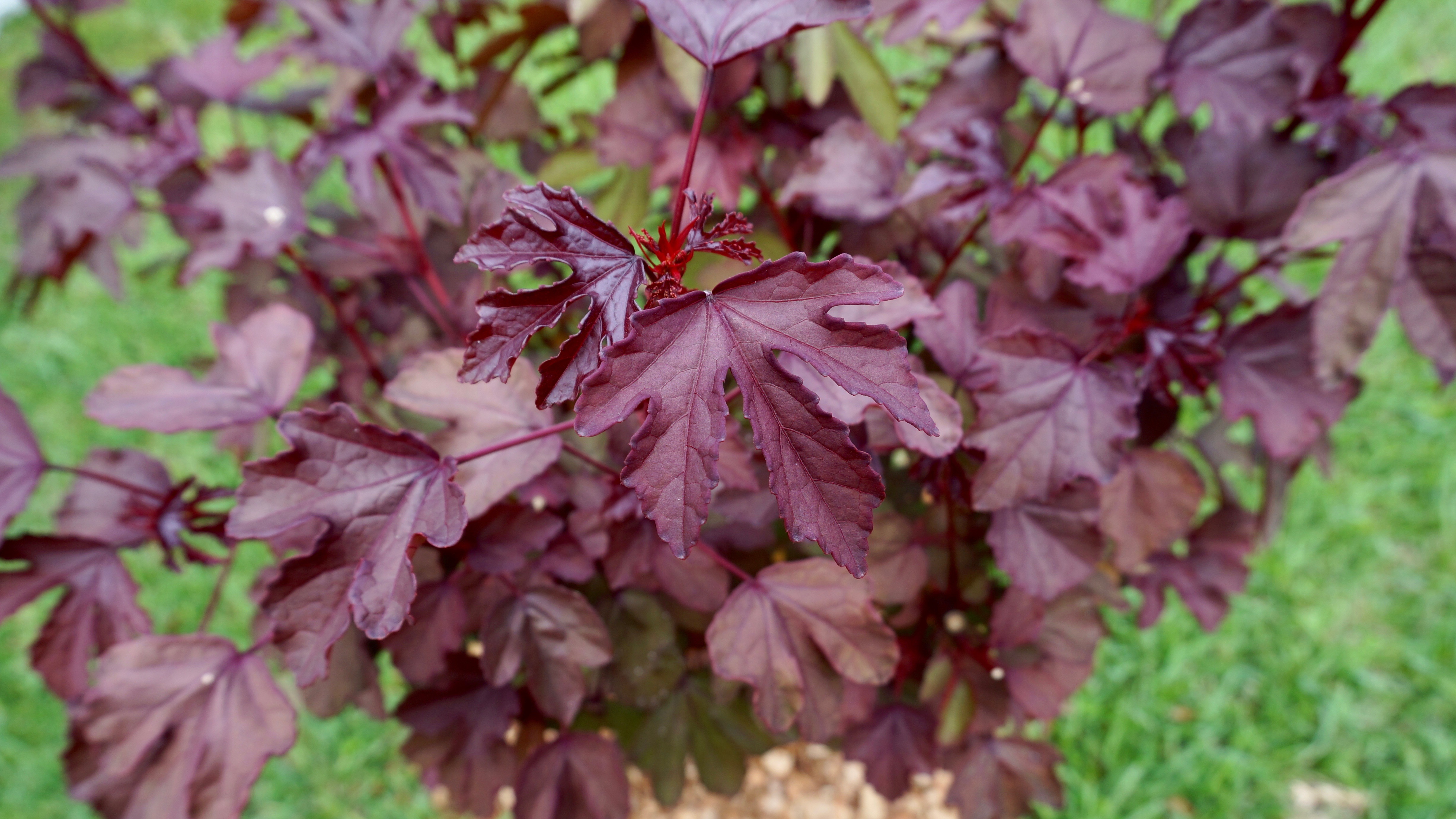
Introducing the Cranberry Hibiscus
The cranberry hibiscus is one of my favorite perennial vegetables, mainly because it’s so easy to grow. As a bonus, its leaves are a beautiful purple color that stands out in the garden and on the dinner plate. It is most commonly known as “cranberry hibiscus” or “false roselle.” This plant is in the mallow family (Malvaceae), and some of its close cousins include Jamaican sorrel and okra. The species is native to Africa and has been introduced to other warm regions of the world like Southeast Asia and South America. It is most commonly grown in home gardens as an edible or ornamental plant. Unfortunately, it is unlikely that you will find cranberry hibiscus leaves for sale in grocery stores any time soon, so if you want to eat it you will need to grow it.
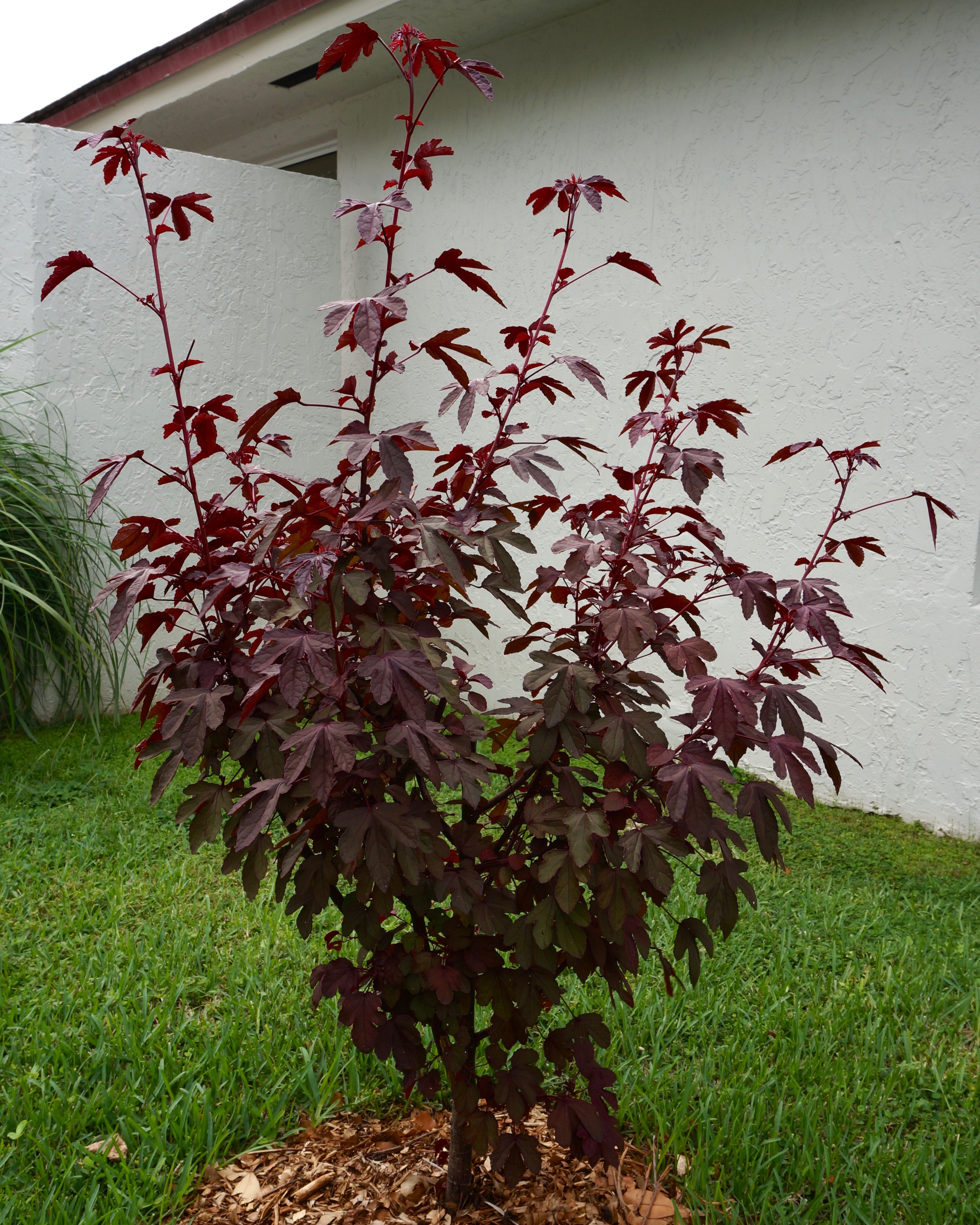
Growth Habit of Plant
One of the reasons the cranberry hibiscus is so easy to grow is because it is a short lived perennial bush. Once you plant it will grow very fast and produce for a few years. The bush likes to grow up instead of out. If left unpruned it will grow long stems that can reach about 9 feet in height. They will eventually fall over and make a bit of a mess in your garden. You can prevent this by snipping off the long stems when the plant is still young. Most of the leaves have a dark purple color, deep lobes, and jagged edges. I have also seen a few leaves that do not have lobes or are green.
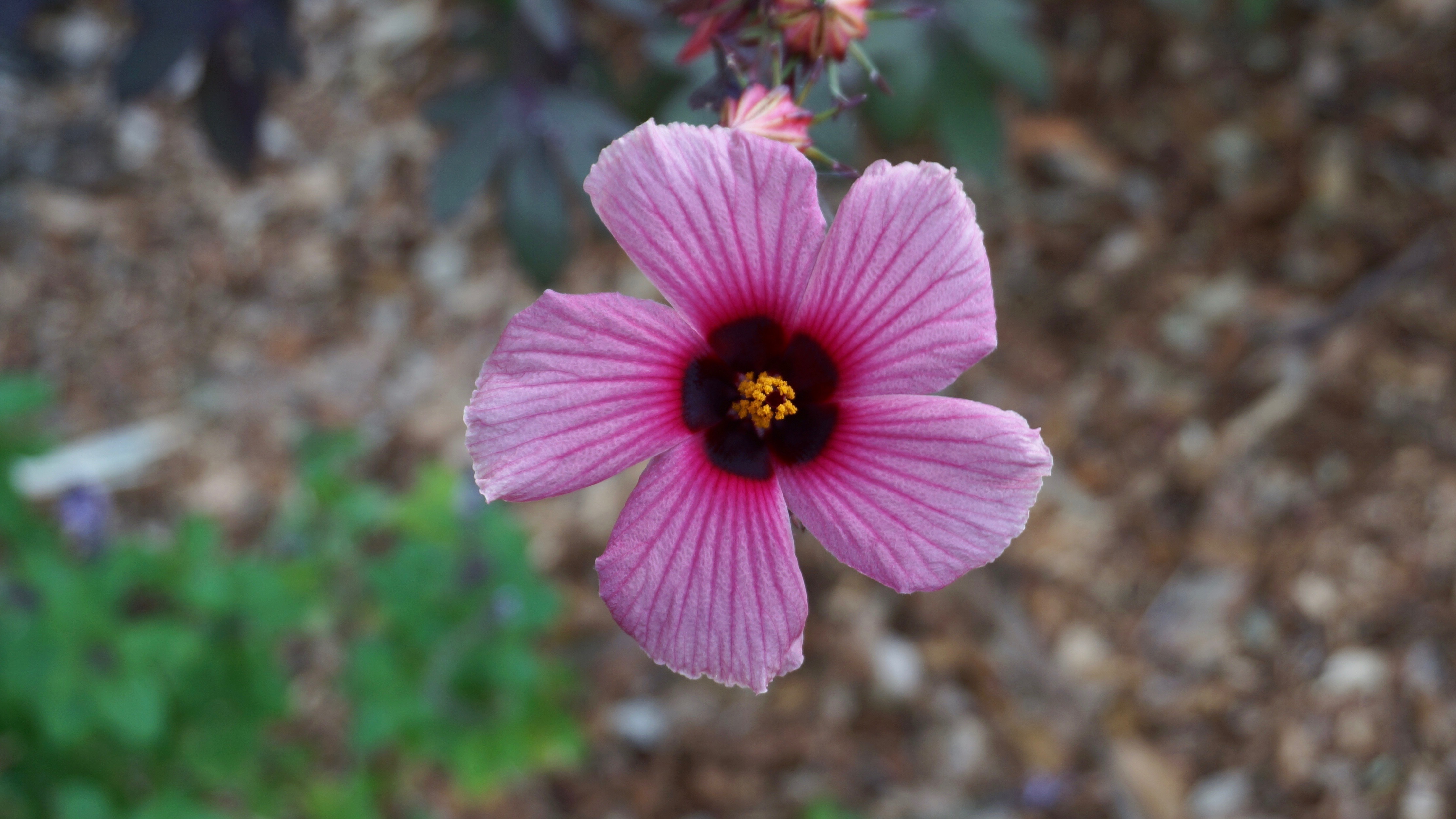
Growth Habit of Flower
In Florida the cranberry hibiscus blooms during the fall and winter. During this period is when the plant begins to grow the long stems. Along the stems flowers will appear. The pink flowers are borne separately, open for a day, and are about 4 inches wide. The plants are bisexual and self-pollinating.
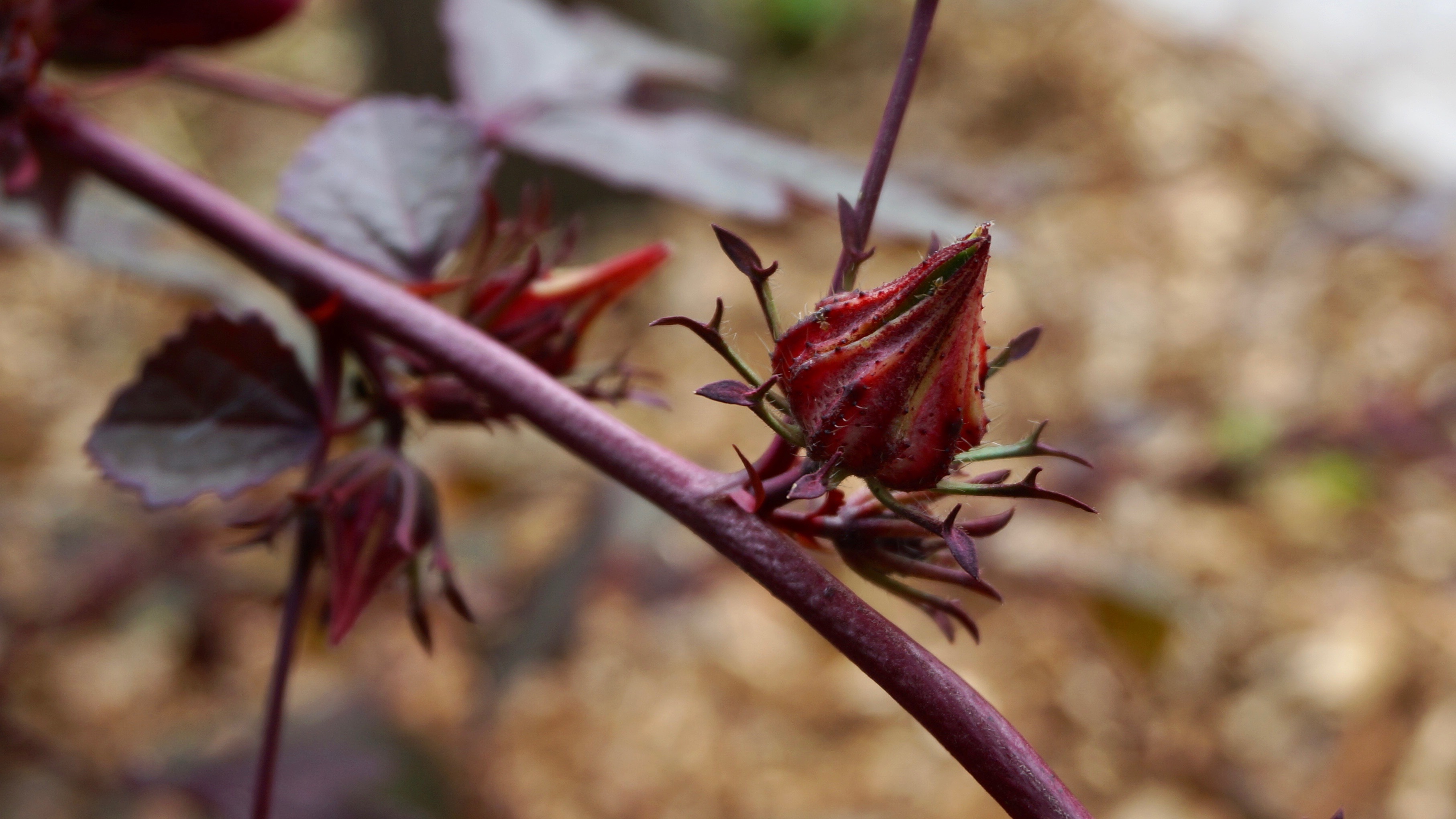
Growth Habit of Fruit
The cranberry hibiscus like most of all other flowering plants produces a fruit. However, the fruit is not what most would consider to be a fruit in terms of the culinary definition. Instead, it is a dry fruit similar to how dried bean pods are a dry fruit. Once pollinated the plant produces a capsule with many seeds inside. The capsule eventually dries, cracks open in various places, and releases the seeds.
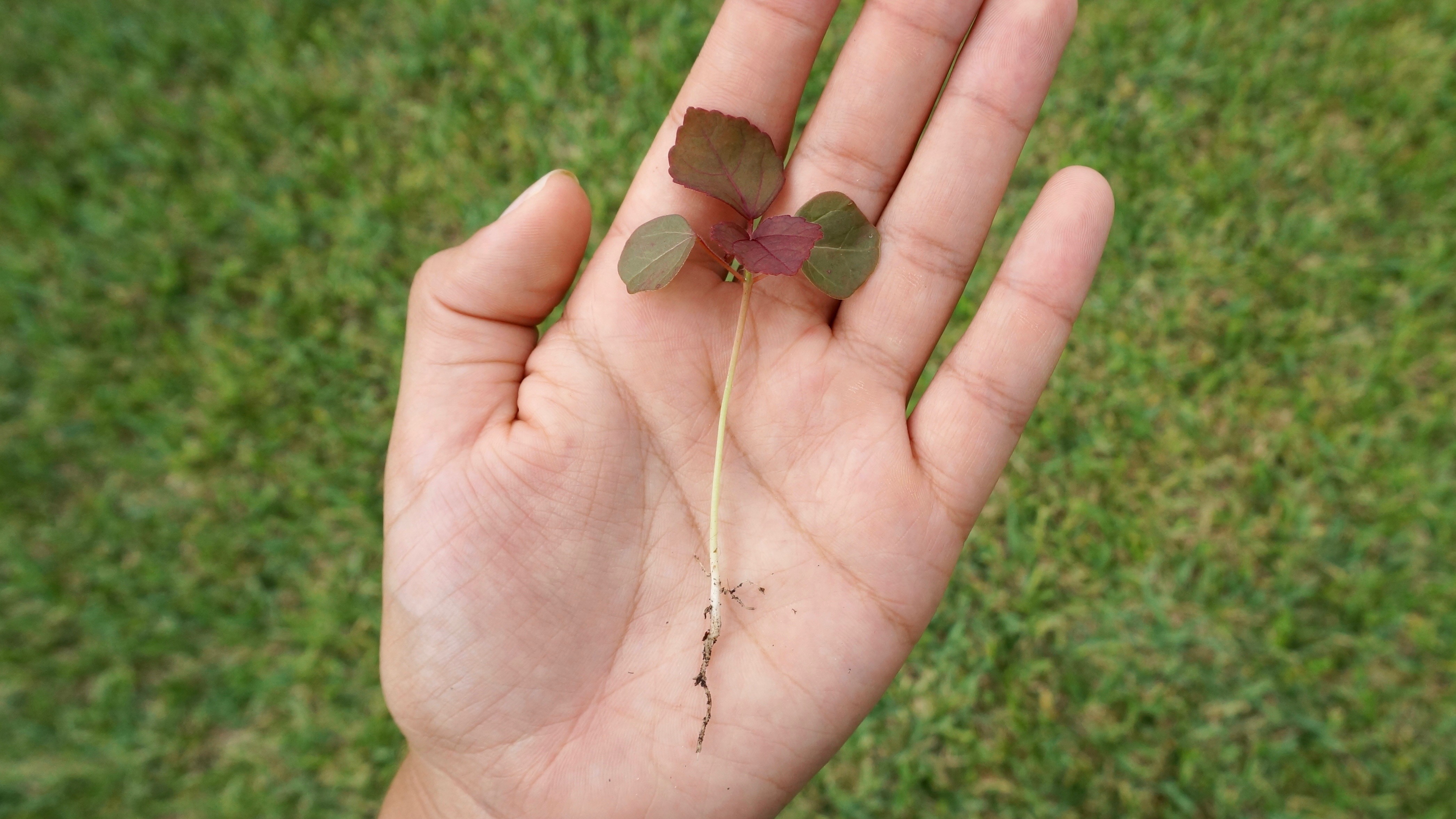
Growing Conditions
The cranberry hibiscus prefers to grow in full sun. It can tolerate shade, but it seems to be more susceptible to pests when grown in the shade. One of my plants received more sun than the others and developed pink leaves. I am not completely sure if that was because of the sun or not. Overall, I have seen they grow best when receiving around 6 hours of direct sunlight. The plant will be damaged by frost but it is likely to recuperate. In very cold regions it can be grown as an annual. It does well in many different soils as long as they are well draining. Once mature the plant does not need to be watered very frequently. I have not tried growing this plant in a pot, but I believe it should do well if kept pruned back.
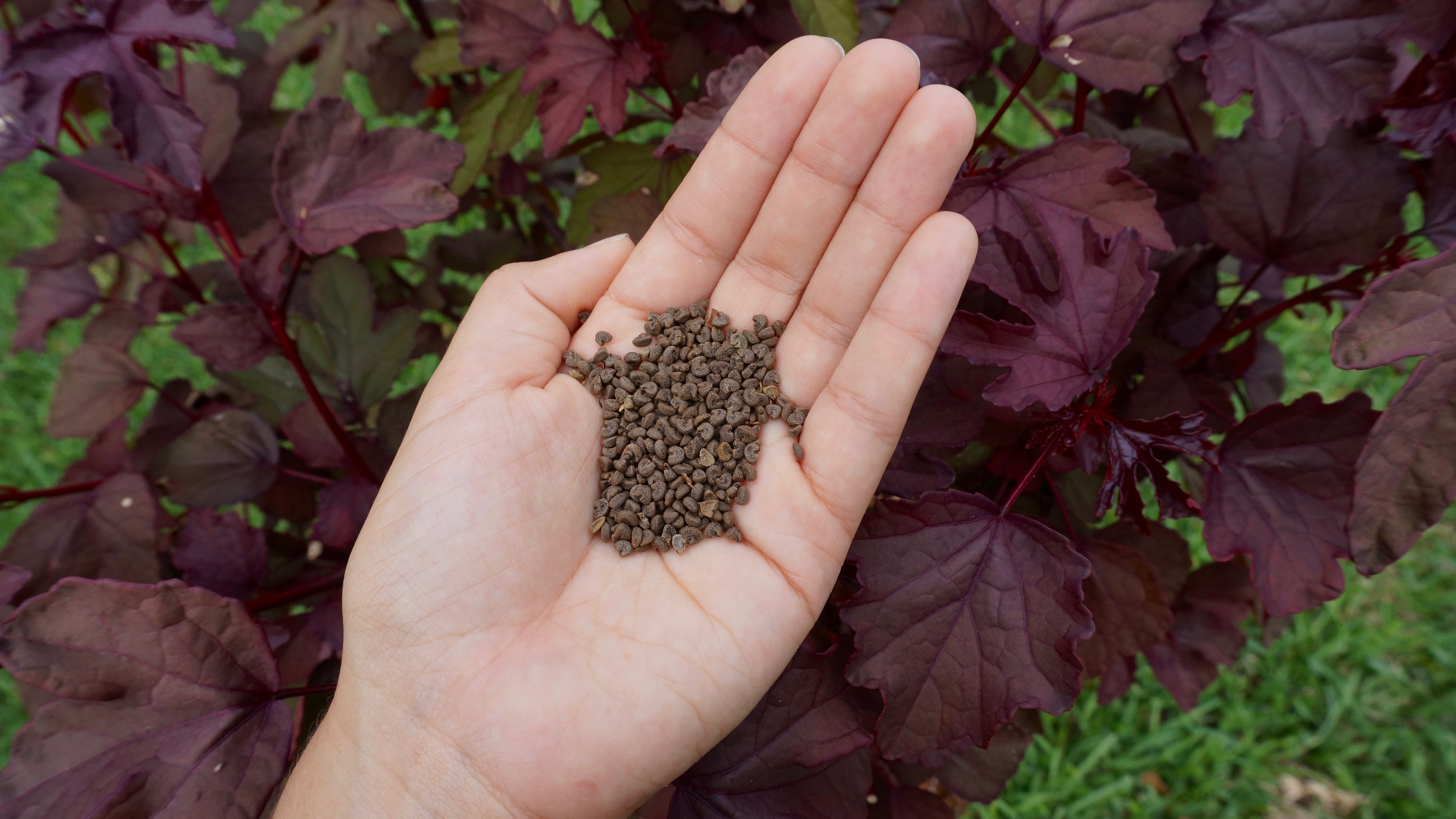
Propagation
Cranberry hibiscus is most often propagated by seed. Seed grown plants will flower and produce seeds in their first year. It can also be propagated asexually by stem cuttings. However, I have not tried this method.
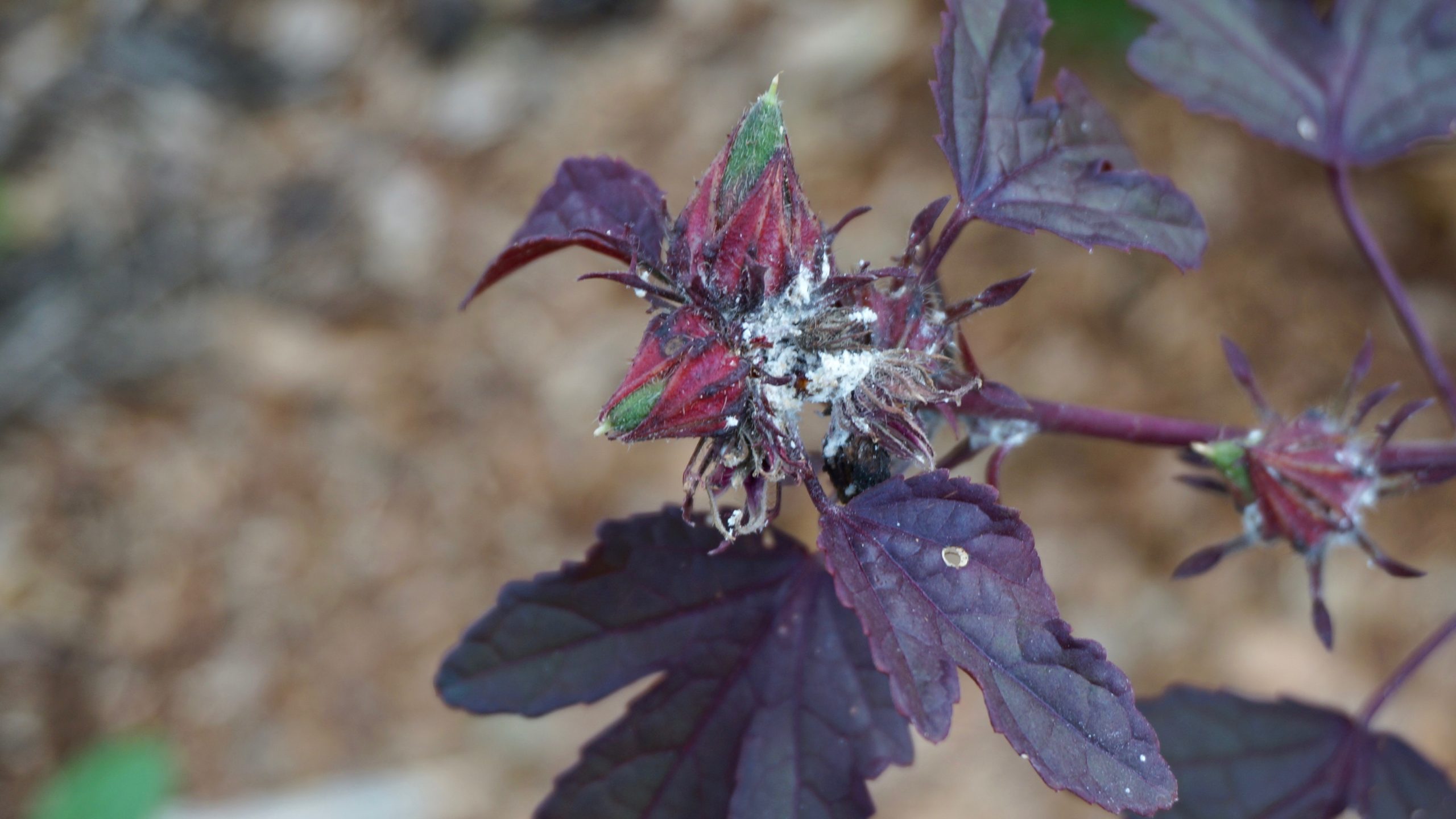
Pests
Overall, the cranberry hibiscus is pest tolerant. However, I have experienced some pest issues. One of the most common problems I have seen is white spots on the leaves. I have not found this to be a major issue though, as it only affects a few leaves. I have also seen aphids under the young leaves a few times. One of my plants that is growing under the shade of an oak tree has many pests problems. It has many aphids and white bugs, which I think are mealy bugs, on the new growth. These pests are also causing the leaves to grow misshapen. This is why I believe it is best to not grow this plant in heavy shade.
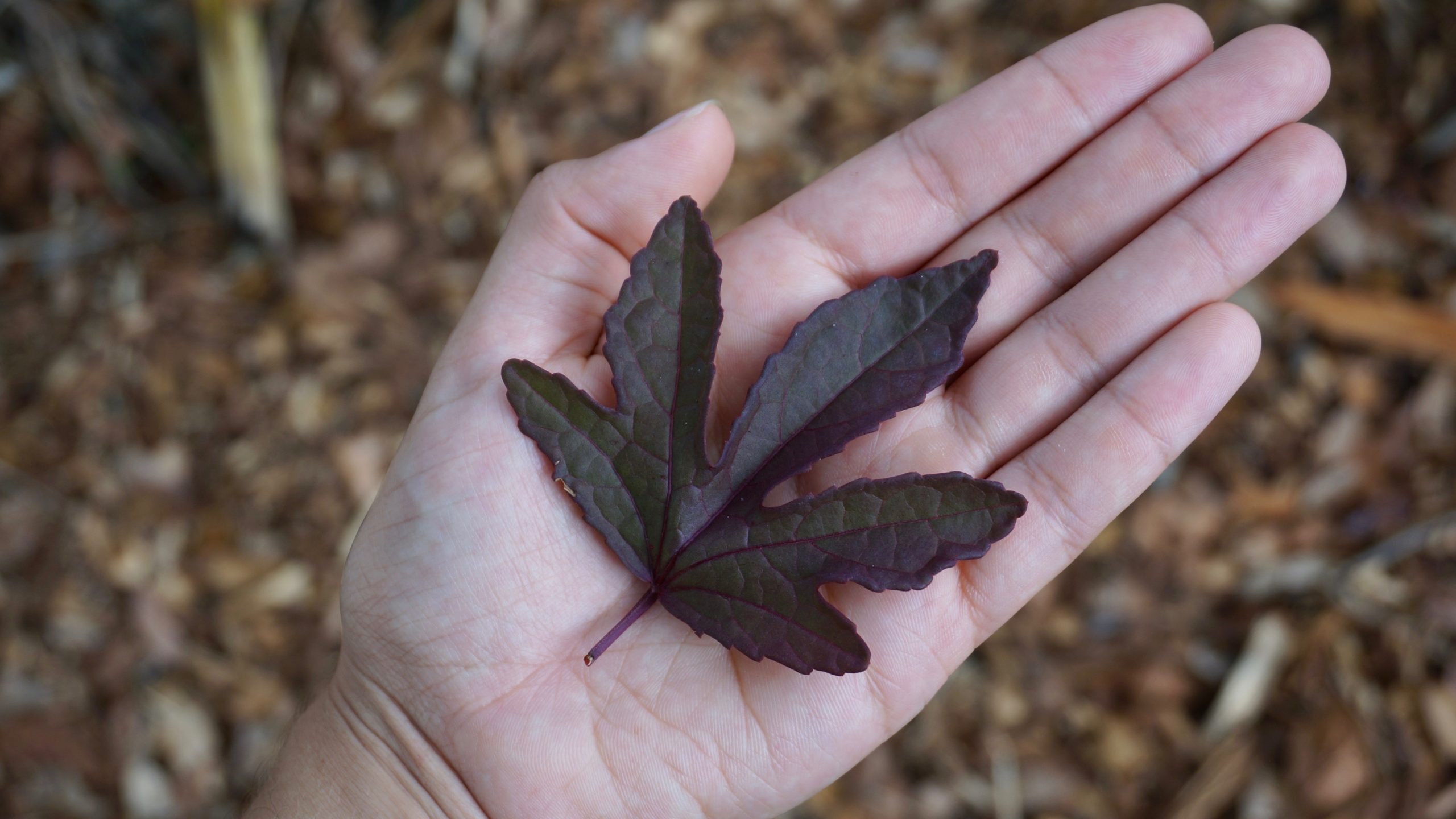
Uses
Both the leaves and flowers can be used. You can harvest the leaves by removing them individually, however, I like to just snip off the tips of the branches. This method is easier and also doubles as pruning so your plant won't grow out of control. The leaves have a nice sour flavor. I have found they are best added to salads. They can also be added to smoothies or sautéed with other leafy greens. The petals from the flowers can be harvested while the flower is open or when it has recently closed. They are used to make tea, syrup, or to add color to different dishes.
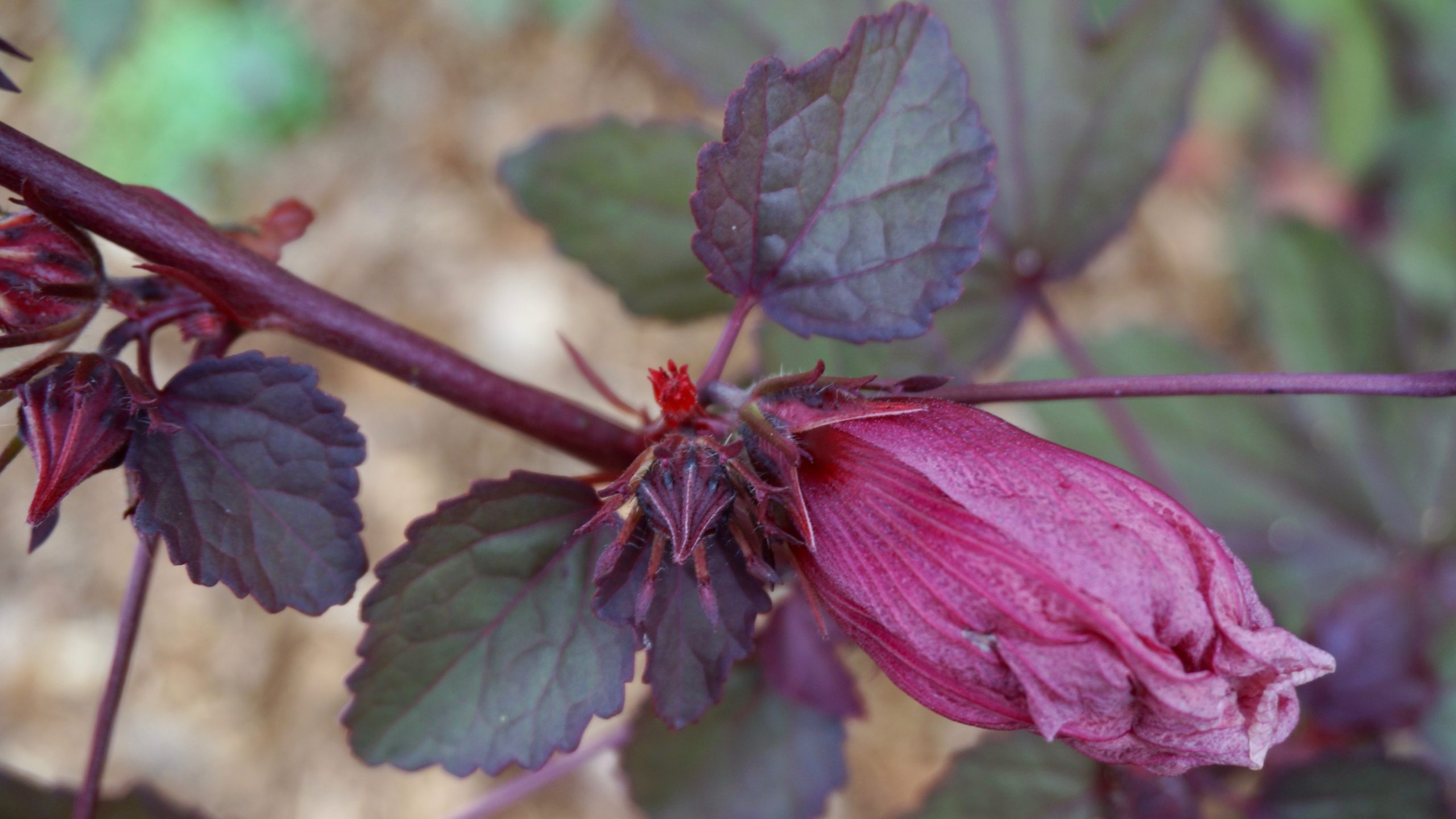
The cranberry hibiscus is a great plant to try if you are a new gardener. They are very easy to grow, beautiful, and tasty. Have you ever eaten cranberry hibiscus or grown it yourself? Let me know down below in the comments. To learn what other plants grow well in warm climates you can click here. You can also see the cranberry hibiscus plants I had growing in my food forest by watching the video down below.
Visit my youtube channel by clicking here.
Ft Myers…my cranberry hibiscus grow well in summer and bloom in fall. Problem is Jan Feb. Most of them have dead flower bulbs. The leaves also shrink up very small.
Can you advise?
Hello, I make tea out of both fresh and or dried leaves and flowers. The taste is somewhat tart flavored. I sweeten teas with honey ot Stevie extract. You can add rose hips or rose petals and makes a great blend.
I was looking for info on cranberry hibiscus as there is a lot of it growing wild on the side of the road where I walk for my health every morning…so that is how I found your site! Wonderful info that is helpful to me! I pulled up a few small shoots to nurture in my yard…your garden is exceptional! I could learn a lot from you! Thank you for sharing in word and pictures.
Hello there. Your garden is Absolutely beautiful 💐. Do you know what Ph cranberry hibiscus prefer? Thank you
I have a cranberry hisbiscus that is quite tall. It just got done blooming and boy did I have a lot of flowers. After the blooms fall, there is a pod,. Am I correct in assuming there are seeds in these pods? believe me I have quite a few as at one time alone I had 10 blossoms in one day! I have it in a container and it gets full afternoon sun from 3 on. It is a gorgeous plant and I am very happy to have come across it.
Did I see a cherimoya plant in your video?
Loved your video; thanks for the info on the cranberry Hibiscus. They look awesome in your garden
I have grown cranberry hibiscus for many years, they are self propagating and they do grow very tall but are managed nicely when you prune them. I have been using them as a privacy fence when grown together just a few feet apart.
Once in awhile I do get white bugs and I just pick them off and kill them and if I make a gallon of a sun made green tea every other week they don't come as often.
If you want more plants from the branches just trim and put in water and they will grow roots and voila you have another plant.
I was told that you shouldn't eat the flowers but I see that you do use the petals in cooking.
So I will try that and see if I get any reactions.
Thank you so much for your article!
We purchased a potted cranberry Hibiscus from a local nursery. It was about 2 ft. tall. We live in the Dallas area of Texas. The plant grew quickly. We transplanted to a larger pot. We have not pruned it. It is 7 ft. Wide and8 ft.tall. full sun. Needs good soil and lots of water. Leaves will wither in 1 day if not watered. Love the plant.
I have a cranberry hibiscus that was a volunteer from a plant that I planted in the fall of 2020. I transplanted it to a flower bed in the front of my house where it gets good sun and it has dominated the bed. It is tall as well as bushy, and I just cut the tallest stem, which was about 7 feet tall, to keep it uniform. I'm going to try to propagate the cutting, and I'm washing and saving the leaves to eat with my salad. I love this plant; it is beautiful, so easy to care for, and grows really fast. I live in central Florida.
Thank you for sharing! Great to hear it is doing well!
We purchased a cranberry Hibiscus in the Spring this year from a nearby nursery. We repotted it in a larger pot and let grow on the patio in full North Texas sun.
It has grown over 6 ft tall and about 5 ft broad. No blooms yet.
Easy to care for and looks outstanding.
Great to hear! I am glad you your plant is doing well.
Info about flowering in zone 7, NJ.... My experience is that the plant grew rapidly and large from spring to autumn outside in my garden but no flowers. So I thought perhaps the plant just needed more months to mature to produce flowers so I took cuttings before frost killed the plants in autumn. The cuttings stayed alive all winter in jars of water and did indeed begin to flower late autumn/early winter.
Thank you for sharing. It seems the plant itself needs many months to mature and flower when grown from seed.
My cranberry hibiscus is about 9 feet tall. It’s just one straight stalk. How do I prune it so it will turn into a bush. It is currently potted. I live in Myrtle Beach South Carolina which I believe is 8b.
Help please
I would recommend just cutting the main branch about halfway. That will force it to produce side shoots. Ideally you would do this when the plant is younger and smaller but it can be done with an older plant. Before you cut it just make sure that the plant will have a good amount of leaves left. You do NOT want to prune it so that it is just a stick without any leaves.
Sounds like this is more of a Bushy plant, than a tree? I kinda would like it to be like a small roundish tree. Is that possible?
Also, will it grow and thrive in ground in full sun, in South East Okla where we get "some"
Occasional snow, and some below freezing temperatures but only a few days and the warmth usually comes back quickly?
Also, Will the freeze totally kill it, or will it come back in the spring, like the freeze kills the above ground part of the Crapemertle plant, but grows back in spring?
This is more of a bush than a tree in my opinion. It can definitely be pruned into a very small tree but it is a bush by nature. I really do not think the plant would be able to survive low enough temps that lead to snow. In colder climates cranberry hibiscus is treated as an annual. I do am not sure if the freeze will totally kill it. I think if it was protected then it could perhaps grow back from any undamaged branches. I have never really seen cranberry hibiscus grow back from roots. For example, the katuk plant will grow back from the roots if it were cut down. It also spreads through the roots and will shoot up new plants nearby. Cranberry hibiscus doesn't do that at all. If I were to cut the bush way back I have found that it will die. I think the best option for you would be to grow it as an annual. When winter is coming take some cuttings, plant them in pots, and bring them indoors. If you are lucky enough to have the plant flower and set seed then you can save the seeds. It needs a really long season for that though.
I have a giant tree in my yard but it doesn't flower. I created him from a stem cutting. But even the parent plant stopped flowering after I started pruning her. I have 2 trees that are over 6 ft tall. I do alot of pruning so my trees are very thick. I will have to research more about flowering. BTW I live in the Caribbean where they enjoy sunshine throughout the year.
I am not sure as to why your plants are not flowering anymore. It could just be because they are older plants. Similar to how fruit trees are. After they get older they generally produce less fruit. But I really am not sure.
Hi... Can we use the calyx of cranberry roselle to make a tea like we use the calyx of roselle???
I think you could. I don't see why not. The only thing is that the calyxes are so small that it might not be worth doing it. But they are similar enough that I think the product would taste good. Maybe the the roselle calyx makes better jam because its bigger and more succulent. But for jelly or tea I think the cranberry hibiscus calyx will work just fine.
Hi, I'm happy to say that I've been quite successful in propagation and growing Cranberry Hibiscus. I'd like to use the flowers for tea but am not sure when to pluck them and which part to use, and how to dry them. Would really appreciate some direction on this. Thanks
I am glad to hear it is growing well for you. That is a good question. I have not actually harvested the flowers myself. I did a quick search and found this video. https://www.youtube.com/watch?v=r_aLDiB8FMc Try watching it to learn. She harvest the petals right off of the flower. I suppose you could clip the whole flower off of the plant and then remove the petals from the end of the flower. However, if you want to save seeds this would not work because then you'd be removing the part that turns into the seeds. So I think her method of harvesting the petals when the flower it open is best.
Hi, do the leaves of the cranberry hibiscus have any medicinal properties? (I read a different variety of hibiscus helps lower blood pressure) When eating the leaves in salad or soup, should you limit your intake to a certain amount of leaves? Meaning do you use it only as a garnish?
I grew several cranberry hibiscus this past season. The plants got huge, over 8 feet and 4 feet wide. However, not a single bloom (in zone 7 NJ) I will try again in 2021 and will try starting the plants from seeds earlier in pots inside so that they have more time to form blooms before the end of the season when cold kills the plants here. I think they just needed more time to make blooms. Also will prune some of them more aggressively to see if that affects blooming. I did not apply much fertilizer because I didn't think they needed it with their vigorous growth but I am going to apply "bloom" fertilizer this coming season to see if that gives me some flowers.
Please answer my questions at the top. Thanks
I am really not sure about the medicinal properties of cranberry hibiscus. I am not very familiar with medicinal properties of most plants. I just know about their culinary uses. As far as I know I have not heard about a need to limit your consumption of the leaves. I know that katuk can cause some issues when it is consumed in large quantities, but I have not heard that about cranberry hibiscus. However, the leaves are so sour that I don't see in which case you would use a whole lot of leaves. I tried sautéing them alone once and it was so sour no one could really eat it. I also juiced them once but again very sour juice. You'd have to mix it with something else to mellow the flavor out.
Hi Melanie,
I hope you are doing fine.
I am from the Philippines but very eager to grow this plant. Unfortunately, I am having a hard time looking for this. I hope I can find one soon or I'll be ordering direct through Amazon. 😊
Great post. Stay safe.
Thank you.
Hello, thank you. I hope you are doing well too. It can be difficult to find some of these tropical plants. I hope you can get your hands on some. 🙂 Happy growing.
My cranberry hibiscus are growing rapidly. They've reached 6 ft. tall and are flopping over instead of staying erect. I staked one and it flopped over again. Any advice to keep it from bending over?
Please post a reply to the above message. It is what I need to know
ThankYou
Hello, that is great to hear your cranberry hibiscus is growing fast. Unfortunately, the plant has a tendency to grow up into a long stick that flops over. Ideally you would prune the plant when it is young to encourage lateral growth (side branches). This way it'll grow bushier and rounder instead of tall and thin. Since your plants are large already you can cut the main stem back a few feet off the ground. I would recommend cutting it 1-3 feet above the ground. Leaving some leaves on the plant would be best. This pruning will encourage the side branches to grow and it'll become bushier. I hope this helped!
hii! when i have propagated my cranberry hibiscus plant ive noticed that the leaves are green instead of red and im wondering what i can to reverse this effect?
Hello! Sometimes cranberry hibiscus leaves will be green. The plant might have some parts with red leaves and some that are green with a red hue. If you entire plant has green leaves with no redness then I am really not sure what might be causing that. Maybe a nutrient deficiency? There are a couple plants closely related to cranberry hibiscus that have green leaves. There is always a possibility that maybe the plant you have is not cranberry hibiscus but instead a close cousin. I am sorry I could not be of more help.
Thank you so much for my seeds! Can't wait to plant and drink the cold tea! Shipping was so fast!
Do you have Ackee Seeds available?
Thank you for ordering! I am glad you like them! I am sorry but I do not have any ackee seeds.
i ALREADY TOKE CARE OF MY ROSELLA PLANT FOR THE WHITE SPOTS, THEY ARE ALSO ON THE FRUIT! CAN i STILL USE THE FRUIT? OR IS IT DAMAGED?
Hello, I am sorry to hear that. The plant that is talked about in this post is cranberry hibiscus and not roselle. However, the plants are closely related. If your roselle fruits are covered in white spots like is depicted in the picture in my post then I suggest you do not use the fruit unless you are able to successfully remove the white residue. I think what was on my cranberry hibiscus plant was mealy bugs.
I have two and they grow like crazy but never bloom. I need advice!
If the plants are doing well, are over a year old, and are not blooming then it might be an issue with environmental conditions. I am not sure what causes the cranberry hibiscus to flower but it is mostly likely something due with daylight hours or temperature because it will flower here during the winter months instead of all year.
What is the true difference between cranberry hibiscus and roselle? Which one is sold as loose tea in the grocery stores?
Good question! So cranberry hibiscus is a plant that has red leaves. You can use the leaves to make tea and many other things. Cranberry hibiscus also goes by the name of "false roselle." Roselle is another plant that is related to cranberry hibiscus and it has green leaves. Roselle is sometimes called Florida cranberry or Jamaican flower. The part that is mainly used from the roselle plants is the calyx of the flower. Cranberry hibiscus and roselle both have a calyx at the bottom of the flower. In the roselle plants the calyx is relatively big. This calyx is harvested from the roselle plant and used to make a sauce that is similar to cranberry sauce. It is also used to make tea. Chances are that the hibiscus tea you see sold in stores is the calyx of the roselle plant. Cranberry hibiscus leaf tea is not as popular as roselle calyx tea. Cranberry hibiscus is also a perennial where it seems that roselle behaves more like an annual. I have not had much luck growing roselle but I am trying again this summer. If it does well then I will be hopefully writing a plant profile about it.